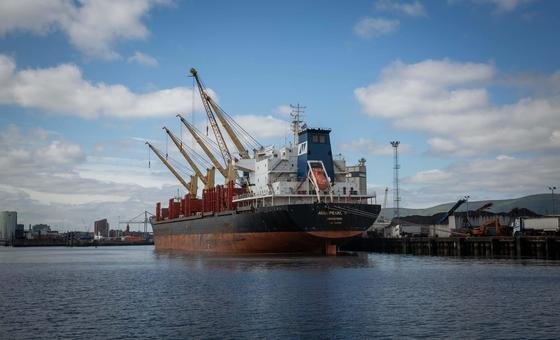The United Nations agency on Thursday published its new analysis, called the ‘Global Trade Update’, according to which there has been an upswing in world trade. In 2024, it may reach 33 thousand billion dollars (33 trillion), which will be the highest level ever.
This represents an increase of one trillion dollars over 2023. A major reason for this 3.3 percent annual growth was the 7 percent growth recorded in the services trade sector, which contributed $500 billion.
But trade in goods has proven sluggish this year and has declined after peaking in 2022.
In the third quarter of 2024, the pace of trade in developed countries was faster than that of developing countries due to stable demand and good business environment.
Imports of developed countries increased by 3 percent and exports by 2 percent. Exports of goods and services to Japan, imports and exports of goods to the United States, and services trade to the European Union increased.
At the same time, developing countries have been seen to struggle during this period. Trade between developing countries reversed past trends and declined by 1 percent. However, in terms of annual performance, trade between developing countries was positive and grew at a pace of 3 percent.
Full of uphill and downhill
In the third quarter of 2024, China’s goods imports and exports, service imports decreased, but service exports continued to increase. Imports of services also increased. Imports and exports of goods have decreased in India, but imports and exports of services have increased. Trade stagnated in the East Asia region – imports showed no growth and exports rose just 1 percent in the quarter.
After touching a new high in 2022, world trade declined by 3 percent in 2023 to reach Rs 31 trillion. One of the main reasons was a slowdown in demand in advanced economies and weakness in trade in East Asia and Latin America.
The international communications, technology and apparel sectors showed strength, while the auto sector declined. Trade in communication equipment grew 13 percent during the quarter, while imports and exports of workplace equipment rose 13 percent. The apparel sector grew by 14 percent in this quarter.
Demand for road vehicles decreased, fuel trade, metal import-export decreased and textile trade also decreased.
The uncertainty of 2025
Uncertainty is looming in the trade sector next year, with a major factor being possible changes in US trade policy, which could disrupt global value chains and affect key trading partners.
The impact of tougher measures, including US tariffs, could be felt in many other industries and economies, and fears of retaliatory measures would deepen. There will also be risks of increasing uncertainty and weakening trade, investment and economic growth.
Changes in US trade policy will have the greatest impact on countries that have a trade surplus with the US, that is, the level of their exports to the US is greater than the level of their imports from the US.
China, India, the European Union and Vietnam are likely to be affected. However, Canada, Japan, Mexico and the Republic of Korea may also be affected.
The UN agency called on developing countries to adopt policies that strengthen trade diversification and invest in key sectors to reduce risks.

